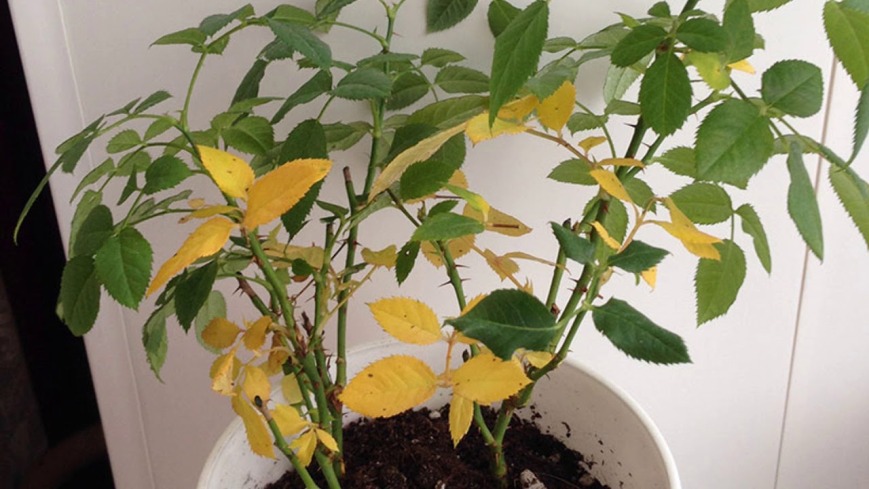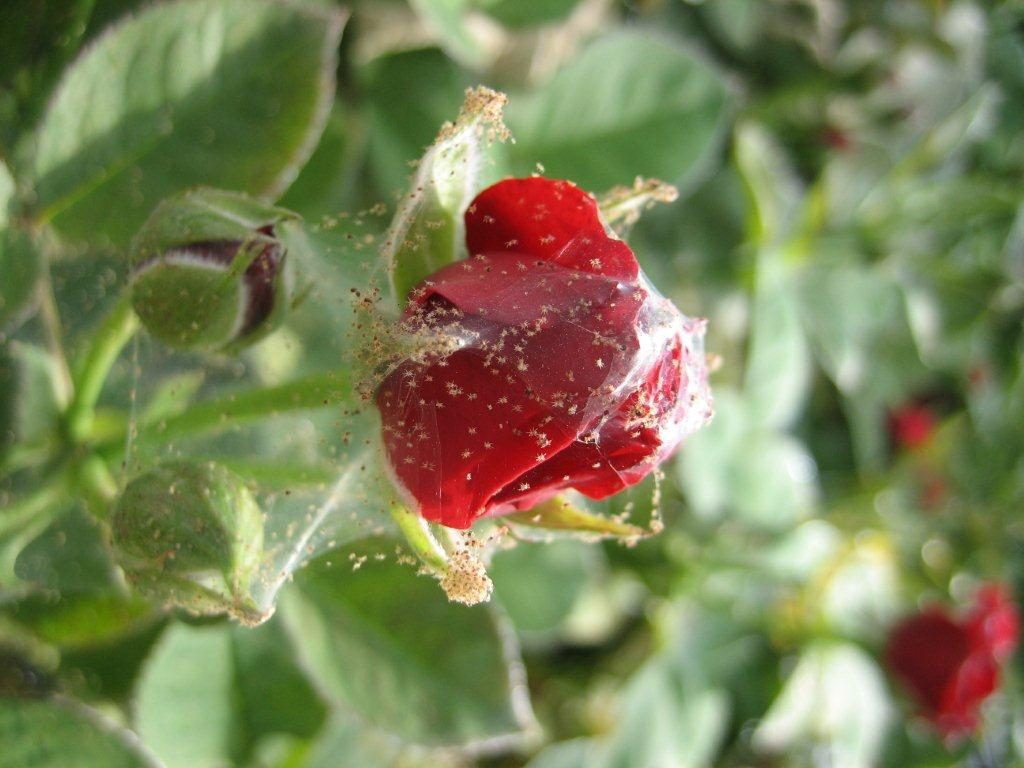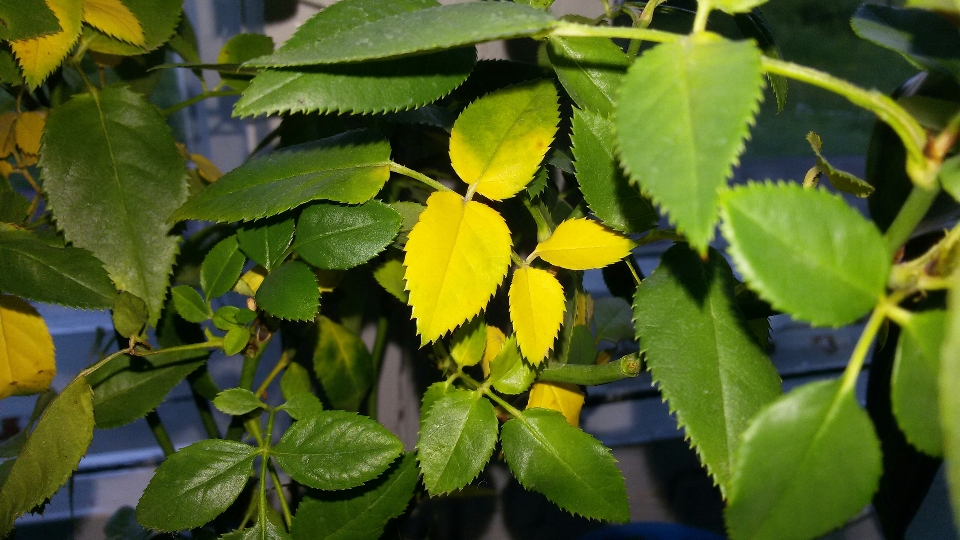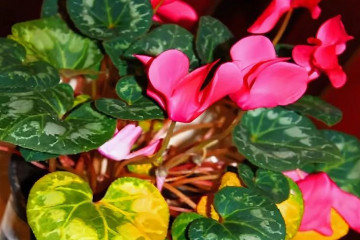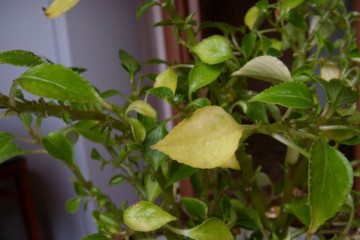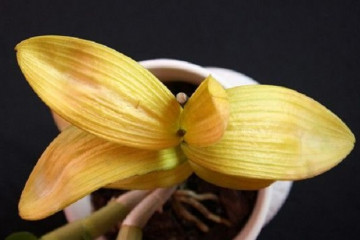Why do roses turn yellow leaves in the summer on the street
The rose is considered one of the most beautiful flowers. It is not surprising that this flower is so loved by many florists. Moreover, they contain them both at home, in pots, and in the open field. Like any plant, the rose can turn yellow - this is one of the most common symptoms of feeling unwell. This happens for various reasons - from infectious diseases and parasite attacks to a lack of nutrients. Therefore, every grower should know why the leaves of a rose turn yellow and what to do to solve the problem.
Causes of yellowness
Before starting treatment, you need to figure out why the leaves of the rose turn yellow. This happens for various reasons and at different times of the year, when grown both in the garden and in pots.
Diseases and pests
One of the most common reasons why rose leaves turn yellow in spring or early summer is when attacked by pests. They suck the juice out of the plant. If you look closely at the affected leaves, you will notice punctures. Sometimes the pests themselves are visible, which are often very small in size. The danger can be:
- rose leafhopper;
- aphid;
- thrips;
- spider mite.
You can't hesitate here. If you run the problem, then the pests will actively multiply and, as a result, can destroy the flower. There is only one way to solve the problem - to completely destroy the insects.
The easiest way to do this is with the help of special preparations. Usually two or three spraying sessions are enough to keep the rose bushes safe.
But one cannot discount the option with diseases - often infectious. It is very important to make the correct diagnosis and then start the appropriate treatment. The main diseases of roses and their treatment:
- Black spot. Diseased leaves must be cut off and disposed of, after which the plant must be treated with Bordeaux liquid or a product with similar properties.
- Purple spot (aka sphaceloma). You need to act in the same way as with black spot.
- Bacterial root cancer. The plant must be dug up to assess the condition of the root system. If it is not too badly affected, then the damaged parts are cut off, and the rest of the plant is treated with "Fitolavin" or a similar preparation. In case of severe damage, the plant is burned to prevent the spread of the infection.
The consequences of improper care
Diseases and parasites are not always to blame for the appearance of a yellow leaf. Quite often, the reason lies in improper care. For example, foliage often turns yellow due to insufficient or, on the contrary, excessive watering. If you normalize the regime, then the problem will be solved over time by itself.
Also, the reason may be a lack of light. For example, in winter, it is advisable to illuminate some varieties with special lamps in the evenings. And if this happens in the summer, for example, on dense Chinese roses, it is possible that the lower leaves do not receive enough light due to the fact that they remain in the shade.The problem can be solved by replanting the flower in a larger pot or by thinning it out.
Lack of macronutrients - nitrogen and potassium
In many ways, the well-being of roses depends on the composition of the soil. And the lack of certain substances, for example, potassium, nitrogen, can lead to the fact that the leaves on bush roses first turn yellow, and then dry up and fall off.
These problems are easy to solve. For example, a small amount of nitrogen can be compensated for by regularly adding ammonium nitrate or urea - just dilute a tablespoon of the substance in a bucket of water and water the bush several times. Moreover, this is important when growing roses in the country and at home. If this is done every May or June, then the problem of nitrogen deficiency will not arise, and the plants will be covered with dense, rich green foliage.
You can also restore the lack of potassium with fertilizers - potassium nitrate or potassium sulfate will do.
Most often, a deficiency of macronutrients is observed when growing roses on sandy, poor soils. So that the leaves do not start to brighten, you need to regularly make the appropriate dressing - mineral or organic.
Lack of trace elements - iron, magnesium, manganese
If there are few trace elements in the soil, this also leads to the fact that the leaves may turn yellow and then crumble. The rose needs to be fed:
- With iron deficiency, you can use any iron-containing feeding. From folk remedies, vermicompost and bird droppings are suitable.
- The lack of manganese is compensated for with the help of manganese sulfate - it is enough to dilute 20 g per 10 liters of water and use a solution for irrigation. At the same time, it will be useful to acidify the soil by adding a little peat.
- If there is not enough magnesium in the soil, magnesium sulfate will come to the rescue - dilute 30 g in 10 liters of water. It can also be replaced with simple wood ash - the main thing is that there are no impurities in it.
In most cases, if you take timely measures, you can prevent the leaves from falling and save the branches and even the buds of the plant.
The main types of yellowing
To understand what is the reason for the yellowing of the leaves, you need to understand its types. The cause must be identified quickly, preferably before the leaves begin to fall. The sooner a diagnosis is made, the sooner treatment can begin. This means that the likelihood of success as a result of the procedure will increase dramatically.
The rose quickly turns yellow and leaves fall
To begin with, you need to figure out why the leaves of the rose turn yellow and fall. Usually the reason lies in inappropriate growing conditions. This often happens due to sudden changes in temperature, for example, if frost has come out after warm days. Indoor plants can react in the same way to a draft or just an open window nearby.
A simple transplant can also lead to similar consequences. In case of any damage to the roots (the reason may lie, for example, in the activity of pests), the plant may become covered with green leaves, which will then begin to be discarded.
Most modern rose varieties rarely suffer from such problems - breeders have worked hard to make them stronger, more hardy.
Only the lower leaves of the rose turn yellow
Sometimes it is the leaves from below that turn yellow in plants. They may not be getting enough light. This is often seen in potted plants in the wrong place, such as in the shade. The upper leaves receive at least part of the sun's rays, while the lower ones do not get this either. They brighten and then turn yellow.
This will not happen if you remember that the street rose prefers sunny places, reliably protected from strong winds. Areas with plenty of sunshine before lunchtime — on the southeast or south side of the garden — are best suited. If there is not enough light, at first the tips of the lower leaves turn yellow, then the shoots become excessively stretched, become painfully thin.
The rose leaves turn yellow and curl
Another alarming symptom is that the leaves not only turn yellow, but also curl up. Insufficient watering is almost certainly the case. Roses do not tolerate drought very well. In order to survive, the plant drastically reduces the amount of moisture given off by the roots to the leaves. They first begin to turn yellow, then dry, and then they may fall off if appropriate measures are not taken.
This is especially pronounced in plants in hot weather. On sunny July and August days, it is especially important to actively water climbing roses growing near the house - they receive a lot of heat and, in order not to dry out, must give off a lot of moisture.
Yellow spots appeared on the leaves of the rose
But the leaves are usually covered with yellow spots when there is a lack of any nutrients. This often leads to problems such as:
- falling of the lower leaves;
- slow shrub growth;
- increased susceptibility to disease;
- the appearance of small flowers with pale petals.
By the nature of the spots, you can determine which substances are missing:
- Lack of potassium - first the top turns yellow, after which the yellowness spreads to the edges.
- Lack of magnesium - the veins turn yellow, the spots spread throughout the leaf. The veins turn brown over time.
- Lack of iron - yellowness evenly captures the entire leaf. Only narrow veins remain light green.
- Lack of manganese - the edges turn yellow, while the veins on the leaves retain a rich green color.
Knowing exactly how the foliage of roses turns yellow in case of specific problems, an experienced gardener will easily understand the deficiency of which substances are observed, and will be able to quickly take appropriate measures to save beloved flowers.
